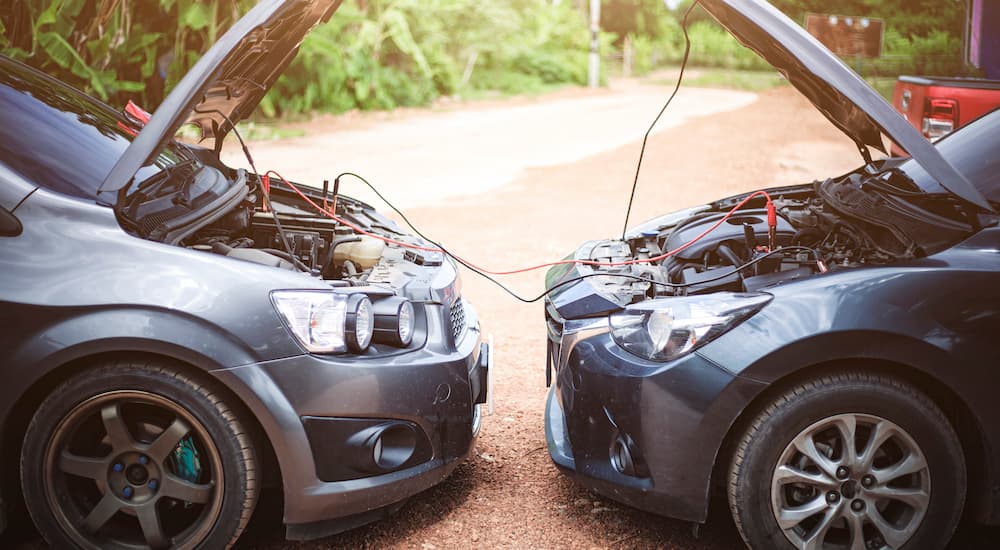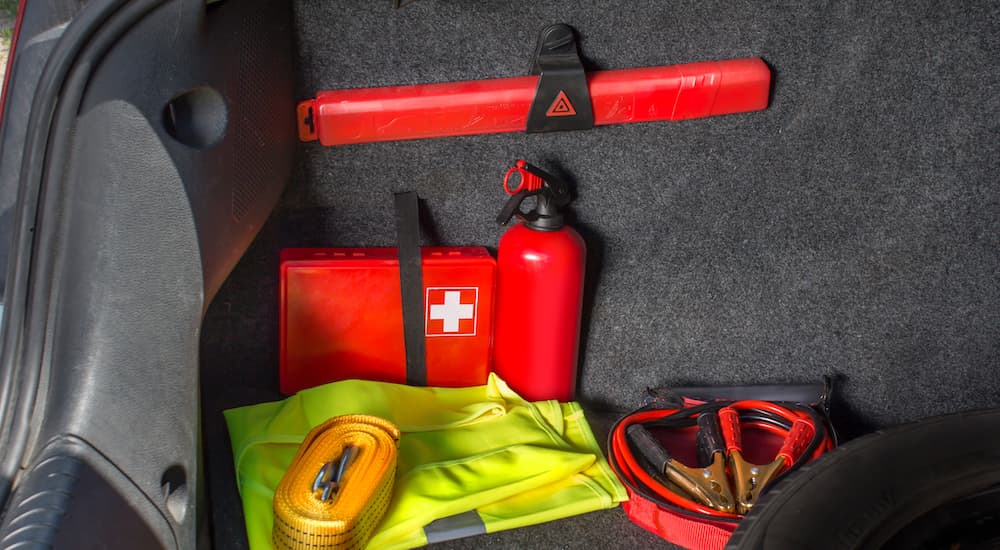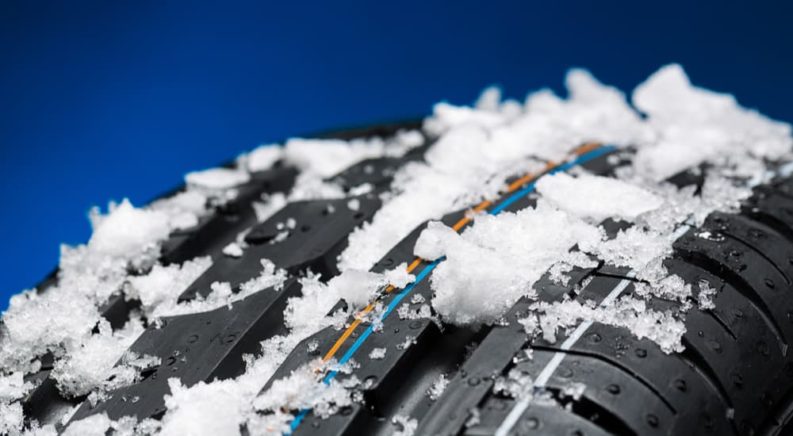The days are getting shorter, the air is getting colder, and the hordes of insects that plagued us all summer have made a retreat. All of this can only mean one thing: winter is right around the corner. Before you start hearing holiday tunes everywhere you go or begin having stressful dreams about family dinners again, this is the perfect time to make sure your vehicle is ready for the weather ahead. If you live in sunny California or Las Vegas, then I don’t want to hear from you. Enjoy your “frigid” 60-degree weather. The rest of us will be digging our vehicles out of snow, trying not to die on black ice, and enjoying what it means to have actual seasons. Fortunately, getting ready for winter isn’t that difficult as long as you take a little time to make sure your vehicle is properly equipped.
Winter Wiper Blades and Fluid
I’m starting with winter wiper blades not because they’re the most important things to get, but because they’re so often overlooked. You’ll regret it when it’s one o’clock in the morning and you’re trying to get home with a layer of ice and snow that’s frozen your wipers to your windshield. This is why you should use winter wiper blades.
Winter wiper blades are designed so that there’s less opportunity for snow and ice to get inside them and freeze them in place. The arms are coated in rubber to ensure the blade maintains its flexibility at all times, keeping it in contact with your windshield or rear window, even when there’s snow, slush, and ice. You can also spring for some pricier beam wipers that are made to deal with rough winter weather better than standard wipers, or just use them year-round so you don’t even have to think about it. Regardless of type, it is important to replace your wiper blades regularly. Even in those sunny warm places I mentioned, rubber degrades over time, especially in direct sunlight. After as little as six months, they can stop doing their job effectively. If you don’t know when the last time you replaced your wipers, now is a good time to do it.
While we’re at it, this is also the perfect time to swap out your usual windshield wiper fluid with winter fluid. Yes, unlike the fabled blinker fluid, seasonal wiper fluid is a real thing that actually exists. When you’re trying to get a layer of ice off your windshield, spraying water on it isn’t going to help, which is pretty much what you’re doing with standard blue wiper fluid, which can even freeze inside its reservoir under the hood. The winter stuff, often orange in color, is designed with a much lower freezing point so this doesn’t happen. When you spray it on your windshield, it helps to melt the ice instead of adding to it like standard fluid.
Winter Tires
If you take nothing else from reading this, then let this be the one thing: put winter tires on your car. Even if you live somewhere that doesn’t get much ice and snow, if the average daily temperature where you live drops below 45 degrees, then you need to use winter tires. The rubber in all-season tires is designed to remain soft and flexible in warm weather for optimal performance, but it becomes hard once the temperature drops and no longer provides good traction.
Winter tires use rubber engineered to remain soft and malleable in extreme cold, ensuring better contact with the road and keeping you in control. On top of that, if you deal with a lot of snow, slush, and ice, then winter tires are also great at handling that with deep grooves that grab snow and dig right into it for better traction. If you deal with serious amounts of ice each year, then you might want to invest in winter tires with studs or a set of chains, but that depends on what’s legal, or sometimes required, in your area. A good rule to follow is to swap to winter tires in early to mid-November, then switch back to summer or all-season tires in the middle of April.
Vehicle Recovery Tools
In a perfect world, the preceding things are all you need to stay safe in the winter. But this isn’t a perfect world, so it’s a good idea to be ready for unexpected emergencies. Vehicle recovery boards, like MaxTrax, are great for getting yourself out of a bad situation where you’re stuck in slush and snow. The old kitty litter standby can work in a pinch, but it’s far from reliable. Since the point where you lost traction is under your tires, it can be hard to get kitty litter in there effectively. A good set of recovery boards, however, can make all the difference. You might also invest in some tow straps and keep them stowed just in case you need help getting unstuck. If you have a big truck or SUV, expect to be called on to help friends and family who get stuck.
Jumper Cables
Speaking of getting stuck, a set of jumper cables can make the difference between calling a tow truck and making it home safely. It’s always a good idea to have jumper cables in your vehicle, regardless of weather, but they’re doubly important when the temperature drops. Cold weather can negatively impact car batteries, so if your battery is having some issues you might not know about, then sudden cold can make those problems impossible to ignore in the very worst way. Just like with tow straps, having jumper cables means you’re ready if you have problems, and it means you can help someone else and be a hero. Portable booster packs are good to have around, but engines are harder to start in cold weather, and it often takes the extra boost of a running engine to give it enough oomph to start.

General Winter Tools
Don’t be that person driving down the street with a bunch of snow on top of their vehicle, blowing off and pelting the windshield of everyone behind them. Similarly, don’t be that guy with just the windshield cleared off and every other window absolutely covered in a blanket of frigid snow. This is not only unsafe, it’s also illegal in many areas and can get you a hefty ticket. Keep a scraper and a little shovel or brush in your vehicle so you can clear off your windows and other surfaces while your car warms up. Scrape your windows clean so you can actually see what’s going on around you (winter washer fluid will help). It’ll keep you and everyone else safer this winter.
Emergency Supplies
The best piece of advice I can give you is to be prepared for the unexpected. A well-stocked emergency supply kit is the ideal way to do that. You should have some water bottles and shelf-stable snacks—nuts, granola bars, and similar items—in your vehicle year-round, but they’re especially important in winter with the increased risk of getting stranded somewhere. Have some warm blankets that live in your car, along with extra gloves, a couple of pairs of socks, and even an extra set of winter boots. A full change of clothes isn’t a bad idea, but socks and shoes are a bare minimum. You should also have some road flares or emergency markers you can set up to help people see you, along with a flashlight or two, some chemical hand warmers, and…
First Aid Kit
Seriously, have a first aid kit in your vehicle that’s well stocked. Go check it, right now, to make sure nothing in it needs to be refilled or replaced. Toss any expired medication and replace it with fresh meds. Also, make sure you have some of any medication that you need to take every day. If you get stranded somewhere, you’ll be thankful that things don’t get worse by skipping important medication. You can find good first aid kits for sale, and the Red Cross has guides to help you put one together if you prefer to DIY that thing.
You can make a first-aid kit even more effective by taking a first aid/CPR course through the Red Cross or other organizations. This way you’ll have a better understanding of how to use the kit, either on yourself or on other people who may be hurt. Even if you’re not certified, though, someone else on the scene might be and will know how to put the kit to use.

Make Sure You’re Ready Before You Need to Be
The key to having your vehicle be its best self this winter is preparedness. Take care of things you need to do before you need to do them. You don’t want to be thinking about snow tires when there’s already a foot of snow on the ground. Long before the ice and snow, when the weather is below 45 degrees on average, put winter tires on your car, check your wiper blades and fluid, and restock your emergency supplies and first aid kit. That way, you can get back to enjoying the crisp feel of the winter air in your lungs and dreaming about sumptuous turkey dinners.

